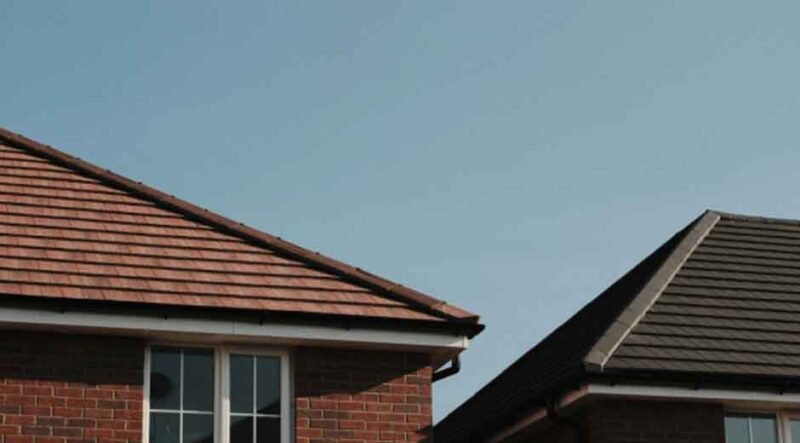
Is your home showing signs of wear and tear up top?
Replacing your roof can be one of the most important home improvements you’ll ever make. Before jumping into the process, it’s good to understand all the things that can affect your decision.
There’s more to roofing than just shingles and nails. Knowing what to look for can help you make smart choices.
This guide will walk you through all the essential things to think about. Read on to learn what you need to know before replacing your roof.
Age of the Roof
Roofs don’t last forever. Most last between 20 to 30 years depending on the material. If your roof is reaching that age, it may be time to consider a replacement. Even if there are no leaks, aging materials can fail.
Check your records or receipts to know when the roof was last replaced. Older roofs may not hold up well during storms. Shingles can curl or fall off as they age. If you’re not sure, a simple inspection can give you a clue.
Visible Damage
Cracked or missing shingles are a warning sign. You may notice bald spots where granules are missing. Water stains on ceilings might also point to roof problems. Broken flashing can let water into your home.
Look for sagging or warping as well. Storms can cause hidden damage. It’s better to check early before leaks get worse. Even small issues can lead to big repairs later.
Roofing Materials
There are different types of roofing materials to choose from. Some are more durable while others are budget-friendly. Asphalt shingles are the most common choice. Metal, slate, and tile are also options.
Think about the look you want and your climate. Some materials are better for cold or hot weather. It’s also a good idea to consider maintenance needs. Materials can affect both the cost and the lifespan of your roof.
Cost and Budget
Replacing your roof is a big investment. Prices vary depending on the size and type of roof. Materials and labor also affect the total cost. Always get several quotes to compare prices.
Set a budget that includes possible surprises. You may find damaged wood underneath. Try not to pick the cheapest option without checking quality. A little more spending upfront can mean fewer problems later.
Roofing Contractor
Choosing the right person for the job is very important. You want someone with experience and good reviews. Ask about licenses and insurance. It’s okay to ask questions and request references.
Make sure everything is written in a contract. A good roofing company will be honest about costs and timelines. Don’t feel rushed to decide. Take your time and pick someone you trust.
Timing and Season
The time of year can affect your roofing project. Summer and fall are popular seasons for roofing. In some areas, spring works well too. Winter can make it harder to work due to cold and snow.
Consider your schedule and local weather. Planning ahead can help you avoid delays. Try to book early during peak seasons. Waiting too long can lead to more damage.
Local Building Codes
Your city or town may have rules about roofing. These are known as building codes. Codes can affect what materials you can use. Permits may also be needed before starting work.
Check with your local office or ask your contractor. Following the rules keeps your home safe. It also prevents fines or extra repairs. Always make sure the job meets code.
Roof Ventilation
Ventilation helps your roof last longer. It lets air flow in and out of your attic. Good airflow stops moisture and heat build-up. Without it, mold can grow or wood can rot.
Your energy bills might also go up. Adding vents during roof replacement is smart. It helps your home stay comfortable. Talk to your roofer about the best options.
Energy Efficiency
A new roof can help lower energy use. Some materials reflect heat better than others. This keeps your home cooler in the summer. It means less work for your air conditioner.
Look for energy-saving shingles or underlayment. This can add value to your home too. It’s a small change that can make a big difference. Better insulation also helps with heating costs.
Gutter Condition
Gutters play a big role in your roof system. They carry water away from your home. If they’re clogged or damaged, water can back up. That can cause roof leaks or damage your walls.
Before replacing your roof, check the gutters. You may need to fix or upgrade them. Seamless or larger gutters work well. Clean gutters mean a longer-lasting roof.
Underlayment
Underlayment is the layer beneath the shingles. It provides an extra barrier against water. Old or damaged underlayment should be replaced. There are different types, like felt or synthetic.
The right choice depends on your climate. It also affects how long your roof will last. Ask your contractor what they recommend. Don’t skip this step-it’s very important.
Roof Pitch
Pitch refers to the angle of your roof. Steeper roofs shed water and snow better. Flat or low-slope roofs need special care. The pitch affects the materials you can use.
It also changes how the roof is installed. Safety matters more on steep roofs. Costs may be higher for complex roofs. Make sure your roofer knows how to handle your roof type.
Homeowner’s Insurance
Check your policy before replacing your roof. Some damage may be covered. Storms or fallen trees often qualify. Your insurer might pay part of the cost.
Take photos before and after the job. Save all receipts and contracts. This can help if you file a claim. It’s best to call your agent with questions.
Consider Essential Factors to Consider Before Replacing Your Roof
Replacing your roof is a big step but also a smart one. It protects your home and adds value. By knowing what to look for, you can avoid surprises. Every home is different, so take time to plan.
Think about materials, cost, and who you hire. A well-done roof can last for decades. Start with an inspection and go from there. Your home deserves the best care from the top down.
This topic sparked your interest? Keep exploring with more content on our blog!

